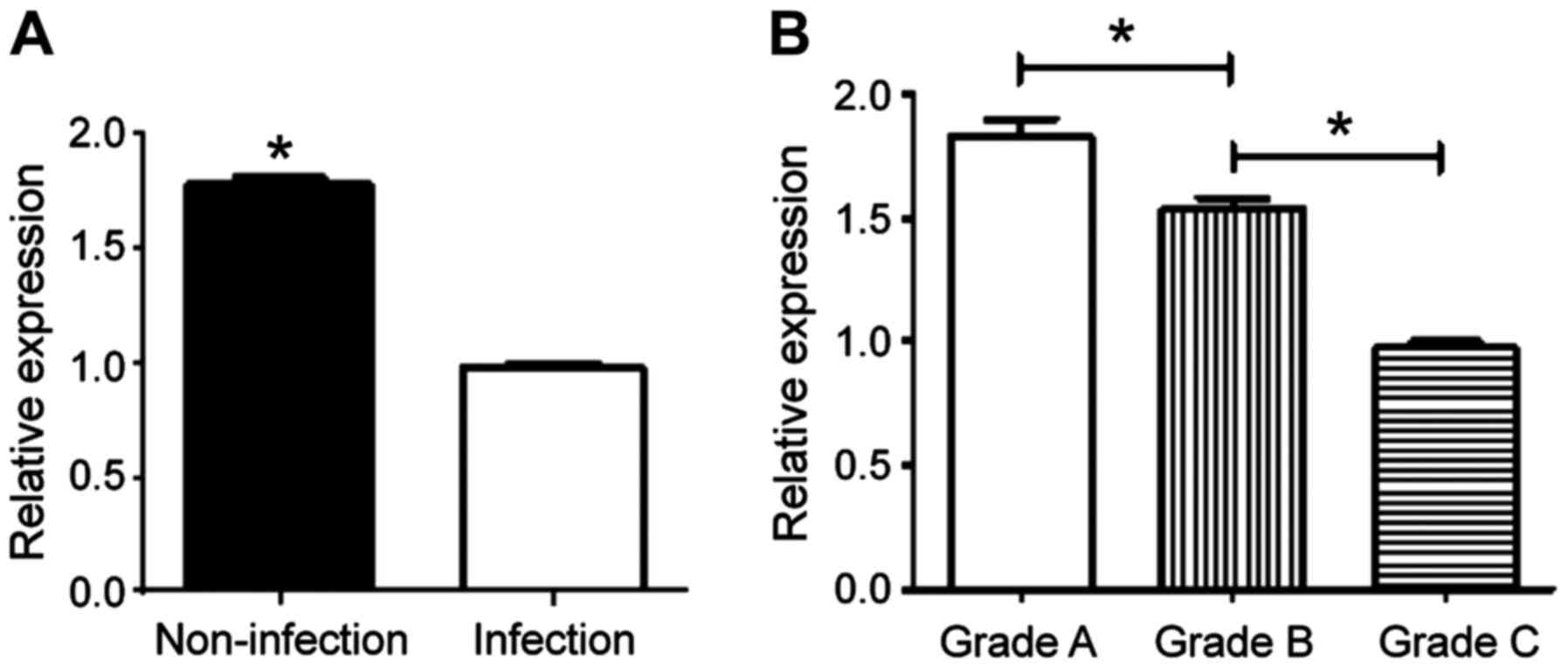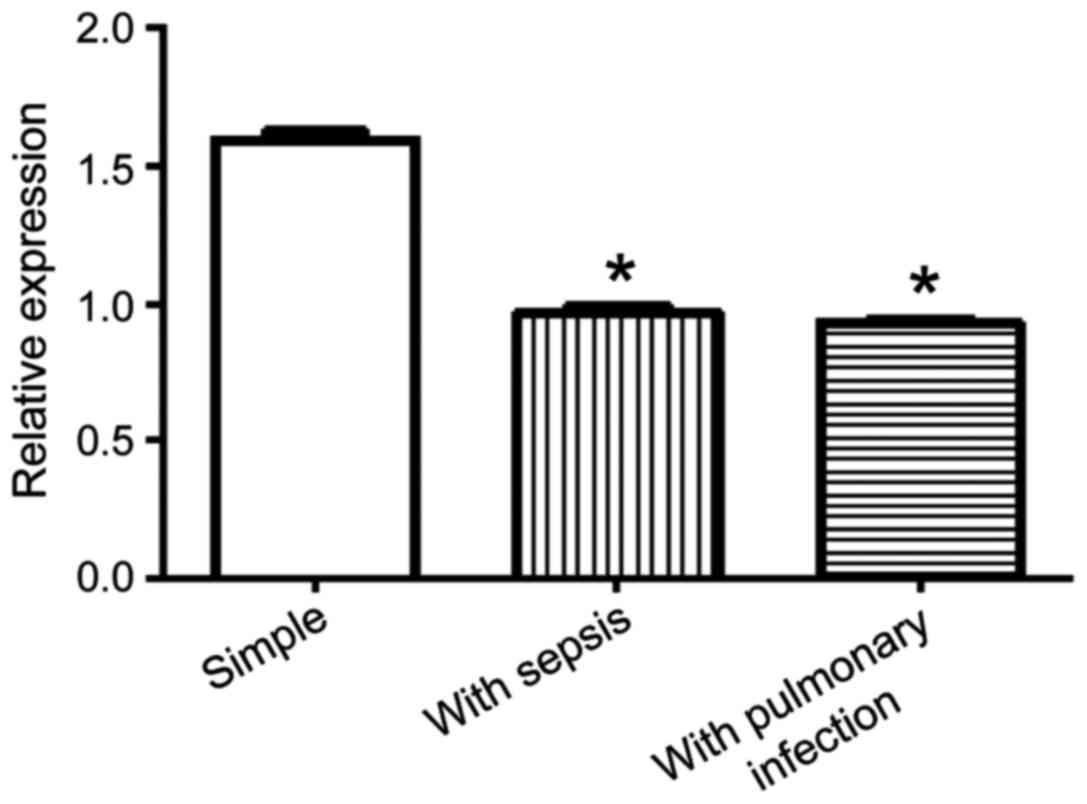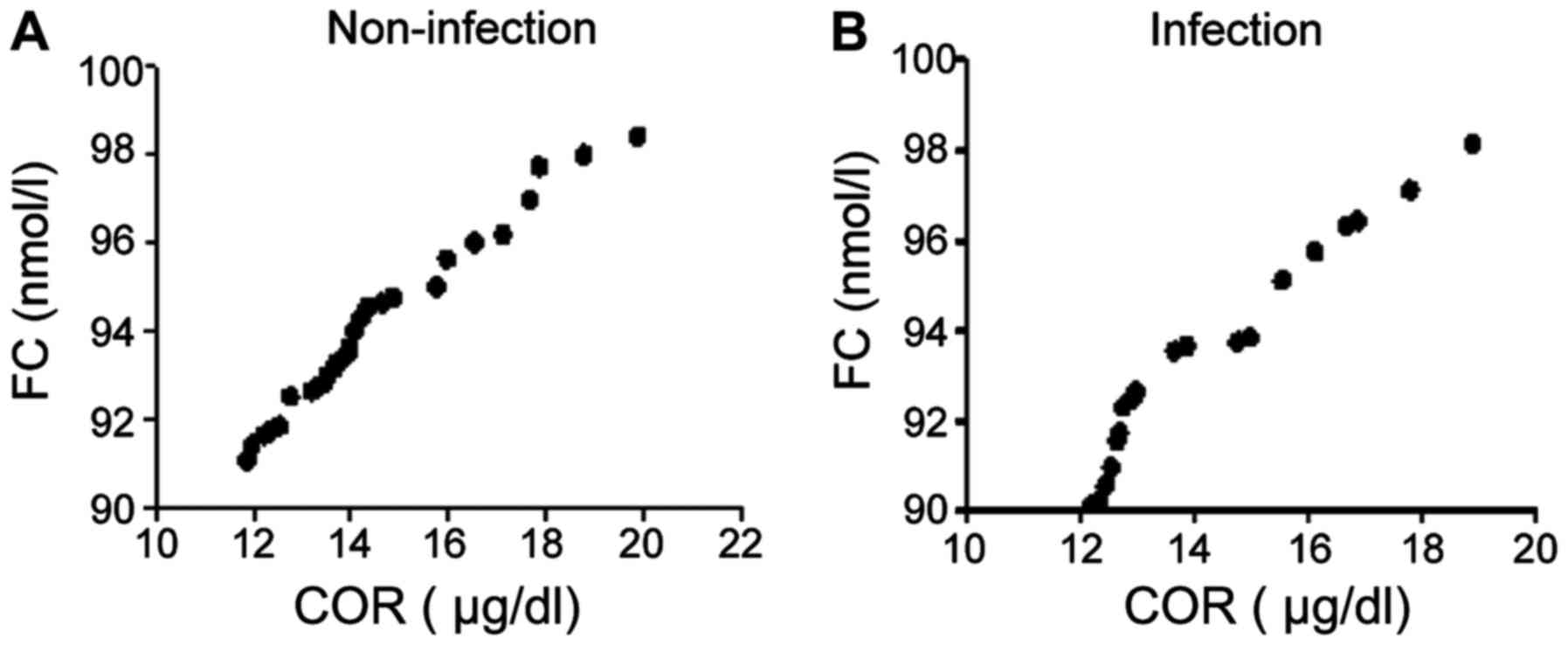Correlation between cortisol levels and concurrent infection for hepatitis B cirrhosis patients and countermeasure analysis
- Authors:
- Published online on: January 11, 2018 https://doi.org/10.3892/etm.2018.5738
- Pages: 2951-2955
-
Copyright: © Zhang et al. This is an open access article distributed under the terms of Creative Commons Attribution License.
Metrics:
Total
Views: 0 (Spandidos Publications: | PMC Statistics:
)
Total PDF Downloads: 0 (Spandidos Publications: | PMC Statistics:
)
Abstract
The study assessed the correlation between cortisol (COR) levels and concurrent infection for the patients with hepatitis B cirrhosis for corresponding countermeasure analysis. In total, 86 patients with hepatitis B cirrhosis (non‑infection group) and 32 patients with hepatitis B cirrhosis complicated with infection (infection group) who were diagnosed and treated in the Beijing YouAn Hospital from March 2014 to March 2017 were selected. The fasting venous blood of all the patients was drawn to detect COR, cortisol binding globulin (CBG), blood routine indexes, C-reactive protein (CRP), procalcitonin (PCT), endotoxin and other indicators. The relative expression of CBG mRNA was detected by reverse transcription quantitative polymerase chain reaction (RT-qPCR). The differences and correlation of COR levels between the infection and non-infection groups were compared and analyzed. The concentrations of COR and CBG were decreased with the increase of Child‑Pugh grade, and the difference was statistically significant (P<0.05). COR, CBG and free cortisol (FC) concentrations with the same Child‑Pugh grade in the non-infection group were higher than those in the infection group (P<0.05). COR, CBG and FC concentrations of abdominal infection complicated with sepsis or abdominal infection complicated with pulmonary infection were lower than those of simple abdominal infection (P<0.05). The relative expression of CBG mRNA was detected by RT-qPCR, which also showed that: for Child-Pugh grade, grade A > grade B > grade C (P<0.05), non-infection group > infection group (P<0.05), abdominal infection + sepsis group and abdominal infection + pulmonary infection group were lower than the simple abdominal infection group (P<0.05). The values of white blood cells (WBC), neutrophils, CRP, PCT and endotoxin in the infection group were higher than those in the non-infection group, and the differences were statistically significant (P<0.05). COR, CGB and FC were negatively correlated with inflammatory indexes such as WBC, neutrophils, CRP, PCT and endotoxin. The r value of COR and FC in the non-infection group was 0.678, while that of OR and FC in the infection group was 0.787. COR was positively correlated with FC before and after infection. The results of the study show that the cortisol levels of patients with hepatitis B cirrhosis are significantly correlated with whether infected or not, levels of disease condition and infection types, and can be used as sensitive indicators of hepatitis B cirrhosis infection.













